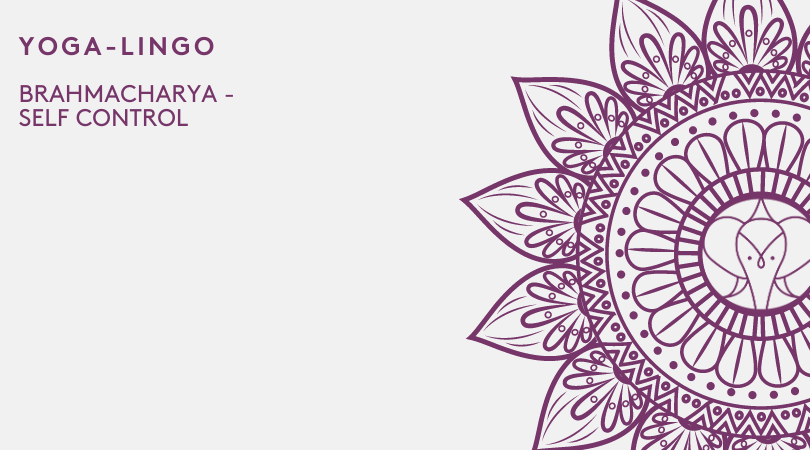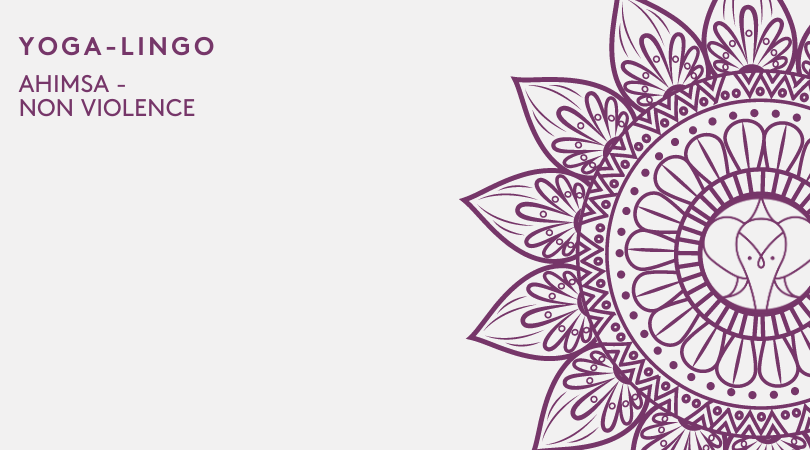Eight Hasta Mudras - Hand Gestures
Hand gestures that assist in guiding energy flow
Your body is like a mini world, which consists of five elements or components Vayu (Air), Agni (Fire), Jala (Water), Bhumi (Earth), and Akasha (Aether). When any of these elements is disturbed, you can experience some imbalance in your mind and make you suffer illnesses. While you can restore your body using physical postures, various yoga poses can assist you in balancing all your body elements. That’s where Mudras come in.
Hasta Mudras are hand gestures that guide energy flow to particular parts of your brain. Mudras come in different types, and each type has different benefits—but this depends on what you especially need. Mudras are combined with breathing in order to increase Prana flow in your body.
Practicing various Mudras during yoga develops a connection with the brain patterns affecting the unconscious reflexes in different parts of your body. Furthermore, the Mudra balances and redirects your internal energy, influencing your tendons, glands, veins, and sensory organs.
Yoga Mudras are great for personal growth, and they can be done in a yoga retreat, meditation retreat, or even at home. The good thing about yoga Mudras is that they only require hand gestures, which means that there is not much physical activity involved.
The following are 8 basic hasta Mudras and why you should do them.

Gyan Mudra
Gyan Mudra, also known as the "Mudra of Knowledge," is a hand gesture used by yoga and meditation practitioners to achieve several benefits for both the body and the mind.
The primary benefit of Gyan Mudra is its ability to open the root chakra, the energy center located at the base of the spine. This action helps to reduce feelings of depression and tension, as well as promote a sense of grounding and stability.
In addition to its effects on the root chakra, Gyan Mudra is also known for its calming and spiritual awakening properties. It is said to kindle the body's air element, which improves the nervous system's function and the pituitary gland's production. This, in turn, helps to improve memory power and concentration levels.
Regular practice of Gyan Mudra is believed to have several psychological and mental health benefits. It may help to reduce stress, depression, anger, insomnia, and anxiety, making it a valuable tool for those looking to improve their overall mental well-being.
Gyan Mudra is a simple but powerful gesture that practitioners can easily incorporate into their yoga or meditation practice.
How to do Gyan Mudra
To perform this yoga pose, you must stretch your index finger using your thumb and keep the remaining three fingers stretched and straight. This pose can be performed better early in the morning for 35 to 40 minutes.
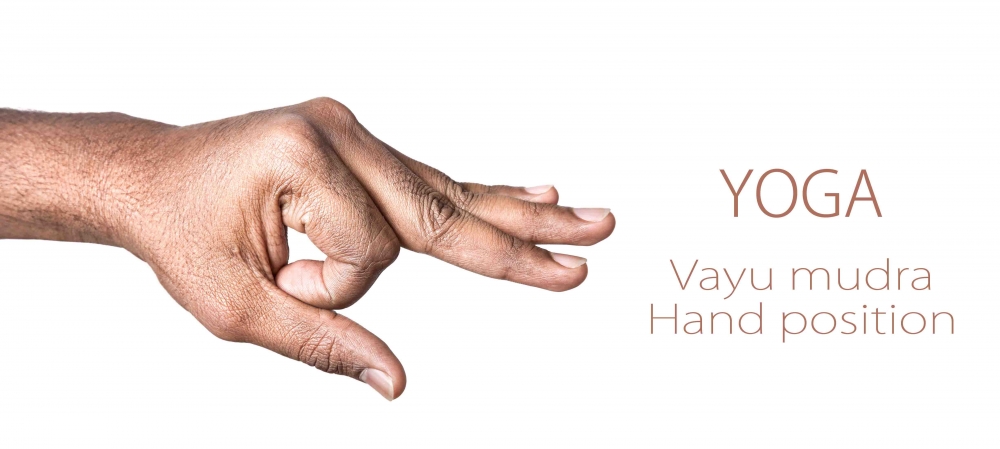
Vayu Mudra
Vayu Mudra, also known as the "Mudra of Air," is a hand gesture with several benefits for the body and mind. It is believed to help reduce the body's air element, which can help to control nervousness and restlessness, as well as calm an anxious mind.
One of the primary benefits of Vayu Mudra is its ability to control Vata dosha, one of the three main principles in Ayurveda that govern movement in the body. This makes it particularly useful for people with gout, gas problems, knee pain, arthritis, sciatica, and bulging stomach. In addition to its physical benefits, Vayu Mudra is believed to calm muscles and soothe a strained voice, making it a valuable tool for addressing various health issues.
One of the lesser-known benefits of Vayu Mudra is its ability to harmonize natural body vitalities such as yawning, sneezing, and blinking. By bringing these functions into balance, Vayu Mudra can help to promote overall physical and mental well-being.
How to do Vayu Mudra
Bring your index finger to the base of your thumb while extending the other three fingers. Hold this position for a few minutes, focusing on your breath and the sensation in your hand. With regular practice, you may experience the calming and balancing effects of Vayu Mudra.


Prana Mudra
Prana Mudra, also known as the "Mudra of Life," is a hand gesture that symbolizes the spirit of life and provides health and energy. It enhances eyesight, removes tiredness, reduces vitamin deficiency, and helps the body resist diseases.
In addition to these physical benefits, Prana Mudra can also reduce hunger pangs for fasting and help sleep at night. It can stimulate the entire body, energize it, and set motion in the internal organs.
To practice Prana Mudra, use your little and ring fingers to touch your thumb tip while keeping the other two fingers stretched or straight. Take regular breaths as you inhale and exhale after every few seconds. Practicing this Mudra for 30 to 40 minutes daily can lead to great results.

Shunya Mudra
Also known as mudra of emptiness, it helps in reducing the body’s space element. Practicing Shunya Mudra for one hour regularly can reduce watering in your eyes and ear pain. Shunya Mudra strengthens bones, improves hearing reduces throat problems and heart-related diseases. In addition, it fortifies your gums and heals thyroid infections. Finally, it helps open the heart chakra and assists in meditation.
How to do Shunya Mudra
While sitting comfortably, bend your middle finger in a manner that allows you to keep it at your thumb's base. Then, use the tip of your thumb to press the middle finger's first phalanx bone and ensure that the remaining three fingers remain stretched and straight. To achieve great results, ensure that you practice Shunya Mudra thrice a day for 15 minutes.

Apan Mudra
Also known as Mudra of Digestion, it relieves constipation, diabetes, piles, dental problems, and kidney problems. This Mudra is suitable for heart disease and the stomach. Toxins are not good for your body. Every time you eat food, your body doesn’t digest the entire food you eat, and this makes toxins to form in your body. Because of this, it is always a good thing to detox your body, and Apan mudra is suitable for detoxifying your body.
How to do Apan Mudra
You need to bend the middle and ring fingers and then touch your thumb’s tip as the other two fingers remain straight.

Surya Mudra
Practicing this Mudra helps you to lose weight and control obesity. This mudra upsurges your body's fire element, and this helps in maintaining the body temperature as well as improving your vision. Moreover, this Mudra helps in curing other issues like indigestion, poor appetite, cold, shivering, and coldness of your hands, feet, and limbs.
How to do Surya Mudra
Using the tips of your ring finger, touch your thumb’s base and then exert some pressure to the thumb. Ensure that the other fingers remain relaxed or straight. To achieve great results, make sure that you practice Surya Mudra for 30 minutes every day in the morning.
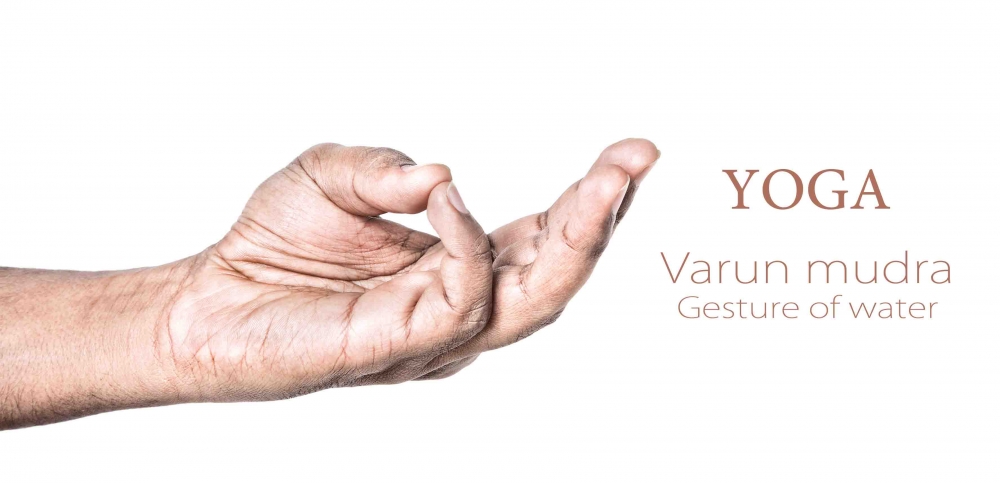
Varun mudra
Also known as mudra of water, it is good for skin care as it helps reduce skin dryness and improves skin softness and luster. In addition, Varun Mudra helps to cure several skin diseases. This mudra mostly creates mental clarity and inspires fluid communication and openness. Lastly, it helps in balancing the water element in your body.
How to do Varun Mudra
Faintly touch your thumb tip using your little finger and then exert a little pressure and check to see any difference. This Mudra doesn’t have a time limit, and you can do it anywhere and anytime. To get better results, consider sitting cross-legged.
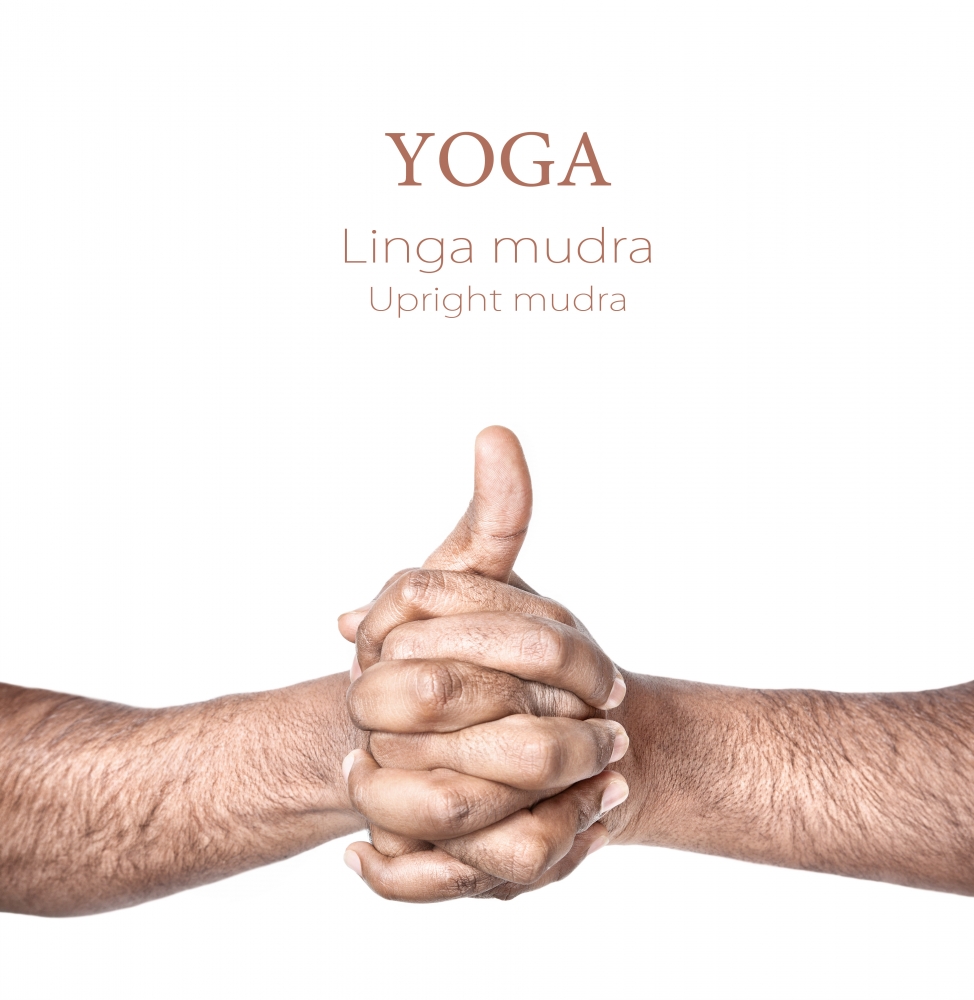
Linga Mudra
This heat Mudra helps build heat in your body, making you sweat even during the winter. Linga Mudra can help you to manage asthma, cold, sinus, dried phlegm, and cold.
How to do Linga Mudra
Hold your hands together, clasp the fingers together and ensure that your right thumb remains erect. Sit relaxed, and then exert slight pressure. Linga Mudra can be done for up to 30 minutes each day.
Other Yoga Mudras in Yoga
Brahma Mudra tutorial with yoga teacher Guy Powicki
Māna - Head Mudras
These practices involve the use of the eyes, ears, nose, tongue, and lips, which are an integral part of kundalini yoga and other meditation techniques. They are used in their own right to help bring about a sense of inner peace and clarity.
- Shambhavi Mudra: Eyebrow center gazing with eyes half-open
- Nasikagra Drishti: Nosetip gazing
- Khechari Mudra: Tongue lock
- Kaki mudra: The crow's beak
- Bhujangini Mudra: Cobra respiration
- Bhoochari Mudra: Gazing into nothingness
- Akashi mudra: Awareness of inner space
- Shanmukhi mudra: Closing the seven gates
- Unmani Mudra: The attitude of mindlessness
Kaya Mudras - Postural Mudras
These practices involve the use of physical postures in combination with focused breathing and concentration techniques.
- Prana Mudra: Energy (breath) seal
- Vipareeta Karani Mudra: Inverted seal
- Yoga Mudra: Union mudra
- Pashinee Mudra: Folded mudra
- Manduki Mudra: Gesture of the frog
- Tadagi Mudra: Barrelled abdomen technique
Simha Mudra tutorial with Yogateket Pranayama teacher Guy Powiecki
Bandha Mudras - Lock Mudras
"Bandhas, or "locks," are essential to yoga and pranayama practice. They involve specific muscular contractions or movements that can help stimulate energy and cleanse the energy channels. There are four main bandhas:
- Mula bandha: the root lock
- Jalandhara bandha: the throat lock
- Uddiyana bandha: the abdominal lock
- Maha bandha: Great lock - to do all three locks at the same time
Adahara Mudras - Perineal Mudras
These practices involve engaging the perineum, pelvic floor region, and internal organs, and are often related to harnessing and redirecting sexual energy.
- Ashwini Mudra: Horse gesture
- Vajroli/Sahajoli Mudra: Thunderbolt/Spontaneous mudra
- Maha Mudra: Great mudra
- Maha Bheda Mudra: The great separating mudra
- Maha Vedha Mudra: The great piercing mudra



